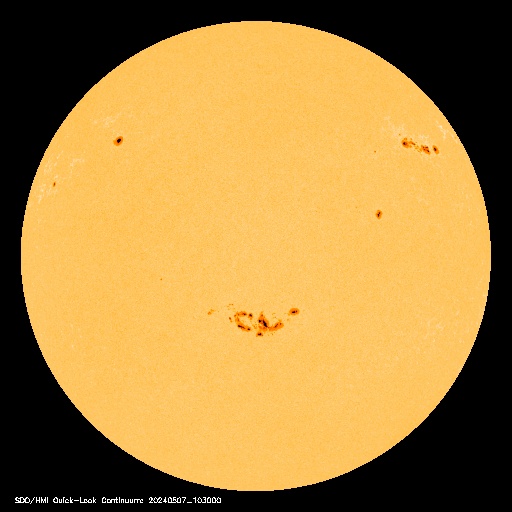 Meteor Showers |
 Tonight's Sky |
|
Your Sky planets and constellations on Thu, 06-Nov-2025 12:09pm CST
See Icon meanings
| Sun/Moon Data for Lincoln NE: | |||
Sunspot Activity
|
Sunset: 5:16 PM Sunrise: 7:03 AM DIY Sunspot Viewer |
|
98% illuminated - Waning Gibbous Moon Moonrise: 5:59 PM (06-Nov-2025) New Moon: Thu, 20-Nov-2025 12:48am CST Full Moon: Wed, 05-Nov-2025 7:20am CST |
 Graph courtesy: Newquay Weather |
Space Wx |
Astronomy Fact
Venus is considerably hotter than Mercury, even though it is further away from the Sun. The thickness of Venusí atmosphere traps heat near the surface of the planet.
Forecasts courtesy of: ClearSky and 7timer
| Color Key |
| Worse | Better | Best | Sky (including Wind) | ||||||||||
| Worse | Best | Worse | Ground |
Space Track-Satellite Passes
When using lookangles, choose passes with high magnitudes; less than 6.0. ("Looks" are local time.)
Best viewing is when ESV is in Earth's penumbra; on the map, it's the solid line during night.
Dotted line on map denotes ESV is dark, in Earth's umbra (shadow).
Objects in orbit have to maintain a speed of at least 17,500mph, therefore ESVs traverse the sky noticeably different than aircraft.
ESVs appearing to blink are either tumbling rocket bodies, or spinning payloads with deployed solar arrays.
High-Eccentricity objects have a more ellongated orbit. Ground trace looks like a backwards C.
Regression-Ground traces will move West with each orbit due to Earth's rotation.
Page template and Facts script courtesy of: TNET Weather on Weather-Watch.
Page Template and Moon script courtesy of: Saratoga Weather.
Graph base code courtesy of: jpGraph.

 Scan With Phone's Bar Code Reader
Scan With Phone's Bar Code Reader





